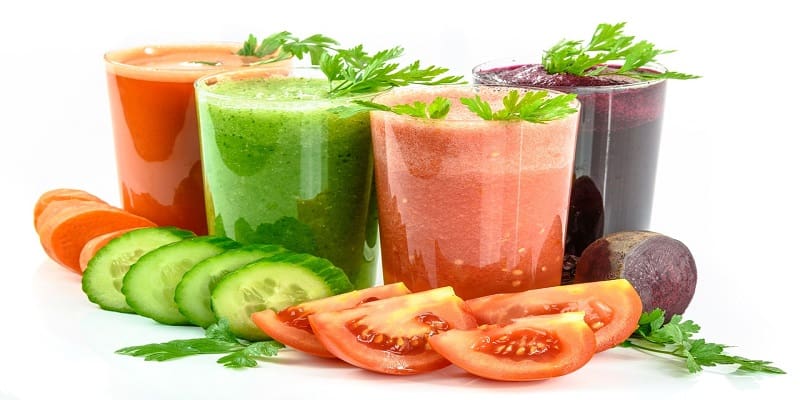Welcome to the tantalizing world of food blogging, where every bite tells a story and every recipe is a work of art. If your taste buds have been longing for an exquisite adventure, then you’ve come to the right place! In this comprehensive guide, we will unravel the secrets behind successful food blogging and delve into what it truly means to be part of this delectable community. Get ready to feast your eyes on stunning photography, unlock culinary creativity, and embark on a gastronomic journey like no other. So grab your apron and sharpen those knives as we unveil the art of food blogging. Prepare yourself for a mouthwatering experience that will leave you hungry for more!
What is Food Blogging?
Food bloggers are people who write about food. They may write about their personal experiences with food, or they may write about the food industry in general. Food bloggers often have a strong passion for food, and they may be experts in the field of food writing.
Most food blogs are created by individuals, although some are created by companies or organizations. Food blogging has become increasingly popular in recent years as more people become interested in writing about food.
A food blog can be a great way to share your love of food with others. It can also be a great way to connect with other people who share the same passion. If you’re thinking about starting a food blog, there are a few things you should keep in mind.
First, you’ll need to decide what kind of content you want to include on your blog. Do you want to write recipes? Reviews? Industry news? Once you’ve decided on the type of content you want to include, you’ll need to come up with a catchy name for your blog.
Next, you’ll need to choose a platform for your blog. There are many different blogging platforms available, so it’s important to do some research before deciding which one is right for you. Once you’ve chosen a platform, you’ll need to set up your blog and start sharing your content!
Setting Up Your Blog
A food blog is a platform to share your passion for food with the world. It is a way to connect with other foodies, learn new recipes and cooking techniques, and share your culinary creations. But before you can start sharing your love of food with the world, you need to set up your blog.
There are a few things you need to do before you can start blogging about food. First, you need to choose a blogging platform. There are many different platforms out there, but WordPress is the most popular option for food bloggers. Once you’ve chosen your platform, you’ll need to set up a domain name and hosting account.
Next, you’ll need to design your blog. You’ll want to choose a theme that reflects your style and the type of content you’ll be sharing on your blog. Once you’ve designed your blog, it’s time to start writing content! Be sure to share recipes, cooking tips, and photos of your delicious dishes.
Now that you’ve set up your blog, it’s time to start promoting it! Be sure to share your content on social media and consider guest posting on other blogs or participating in food-related events. By promoting your blog and engaging with the food blogging community, you’ll be well on your way to becoming a successful food blogger!
Creating Content for Your Blog
If you’re new to food blogging, you might be wondering what kind of content you should be creating for your blog. There are a few different types of content that are popular among food bloggers, and each has its own purpose and audience. Here’s a look at some of the most common types of content found on food blogs:
- Recipes: Perhaps the most obvious type of content for a food blog is recipes. Whether you’re sharing your original recipes or those of others, providing step-by-step instructions for making delicious dishes is a great way to attract readers to your blog. If you want to build a following of passionate home cooks, focus on sharing high-quality recipes that are easy to follow and produce great results.
- Restaurant Reviews: Many food bloggers use their platform to share their thoughts on local restaurants. This type of content can be helpful for readers who are looking for new places to eat or who want to know what others think of a particular restaurant before they visit it themselves. When writing restaurant reviews, be sure to include both the good and the bad so that your readers can make an informed decision about whether or not it’s worth their time (and money) to visit the place you’re writing about.
- Product Reviews: If you’re passionate about cooking, chances are you have strong opinions about the kitchen gadgets and ingredients you use regularly. Why not share your insights with your readers?
Promoting Your Blog
A food blog is not complete without promotion. Without proper promotion, your blog will be lost in the sea of other food blogs. To get started, you’ll need to create social media accounts on platforms like Twitter, Facebook, and Instagram. Then, you’ll need to share your content on these platforms regularly. In addition to social media, you can also promote your blog by guest posting on other food blogs, participating in food-related forums, and even conducting giveaways.
Developing a Professional Network
There are numerous benefits to developing a professional network as a food blogger. Perhaps the most obvious benefit is the potential to earn income from your blog. In addition, developing a professional network can help you connect with other bloggers and industry professionals, which can lead to opportunities to collaborate or be featured on other blogs or in other publications. Furthermore, a strong professional network can provide support and feedback as you develop and grow your blog.
If you’re interested in making money from your blog, there are a few things you should keep in mind. First, it’s important to have high-quality content that provides value to readers. This means writing helpful and informative posts that focus on specific topics related to food and cooking. In addition, your blog should be well-designed and easy to navigate so that readers can easily find the information they’re looking for. Be sure to promote your blog through social media and other channels so that potential customers can find you.
If your goal is to connect with other bloggers or industry professionals, there are a few different approaches you can take. One option is to participate in online communities related to food blogging. These communities can provide valuable networking opportunities as well as support and feedback from other bloggers. Another option is to attend food blogging conferences or meetups; these events typically attract like-minded individuals who are interested in connecting with others in the industry. Don
Strategies to Increase Engagement
If you’re a food blogger, chances are you’ve asked yourself how to increase engagement on your blog. After all, engagement is the key to success in blogging. Here are some strategies to help you increase engagement on your blog:
- Respond to comments. When someone takes the time to leave a comment on your blog, make sure to respond. This shows that you’re listening to your readers and value their feedback.
- Host giveaways and contests. Everyone loves a good giveaway, so use this as an opportunity to engage with your readers. Ask them to submit their favorite recipes or vote for their favorite restaurant in your city.
- Get involved in the community. There are tons of food-related forums and groups online where you can get involved in discussions and meet other like-minded foodies. This is a great way to build relationships with potential readers and show that you’re an expert in your field.
- Share interesting content from other blogs. If you come across an article or recipe that you think your readers would enjoy, share it on social media or link to it from your blog. This helps broaden your audience and introduce them to new content they may not have otherwise found.
Monetizing Your Food Blogging Efforts
As a food blogger, you have a lot of options when it comes to monetizing your efforts. You can choose to sell advertising space on your blog, work with brands as an influencer, or even create and sell your own products.
No matter which route you decide to take, it’s important to remember that monetizing your food blogging efforts doesn’t have to be complicated. In fact, with a little creativity and some hard work, you can easily start generating revenue from your passion for food.
Here are a few tips to get you started:
- Sell Advertising space.
One of the simplest ways to monetize your food blog is by selling advertising space. This can be done through Google Ad sense or by working directly with brands and businesses that are interested in reaching your audience.
- Work With Brands as an influencer.
If you’ve built up a sizable following on your food blog, you may be able to work with brands as an influencer. This involves promoting products or services in exchange for compensation, which can come in the form of free products, cash, or other perks.
- Create and Sell Your products.
Another great way to monetize your food blog is by creating and selling your own products. This could include anything from cookbooks and e-books to cooking tools and kitchen accessories. If you have a knack for creating delicious recipes, this could be a great
Conclusion
Food blogging is an exciting and creative way to express yourself. Not only does it allow you to share your favorite recipes with the world, but it also gives you a platform to showcase your love for food and all that surrounds it. With the right passion, dedication, and knowledge of what goes into creating successful food blogs, anyone can become a successful food blogger in no time.



































